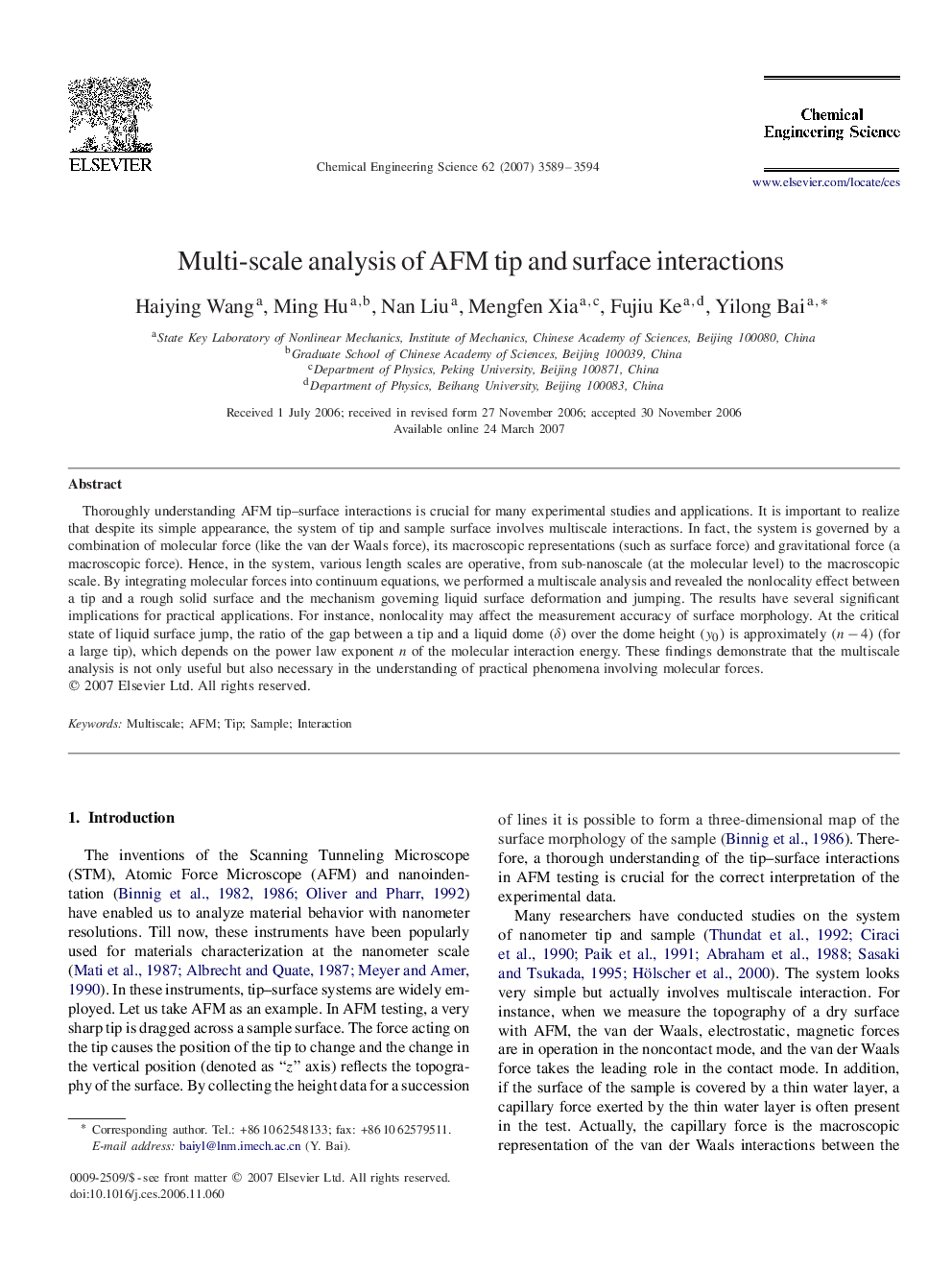| Article ID | Journal | Published Year | Pages | File Type |
|---|---|---|---|---|
| 159190 | Chemical Engineering Science | 2007 | 6 Pages |
Thoroughly understanding AFM tip–surface interactions is crucial for many experimental studies and applications. It is important to realize that despite its simple appearance, the system of tip and sample surface involves multiscale interactions. In fact, the system is governed by a combination of molecular force (like the van der Waals force), its macroscopic representations (such as surface force) and gravitational force (a macroscopic force). Hence, in the system, various length scales are operative, from sub-nanoscale (at the molecular level) to the macroscopic scale. By integrating molecular forces into continuum equations, we performed a multiscale analysis and revealed the nonlocality effect between a tip and a rough solid surface and the mechanism governing liquid surface deformation and jumping. The results have several significant implications for practical applications. For instance, nonlocality may affect the measurement accuracy of surface morphology. At the critical state of liquid surface jump, the ratio of the gap between a tip and a liquid dome (δ)(δ) over the dome height (y0)(y0) is approximately (n-4)(n-4) (for a large tip), which depends on the power law exponent n of the molecular interaction energy. These findings demonstrate that the multiscale analysis is not only useful but also necessary in the understanding of practical phenomena involving molecular forces.
